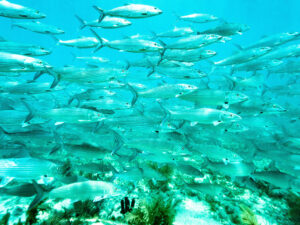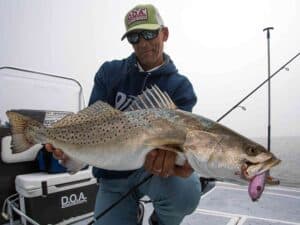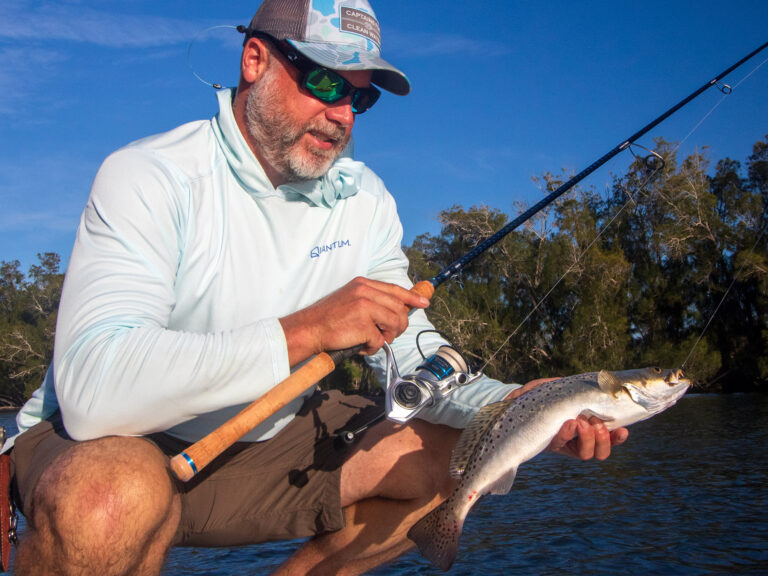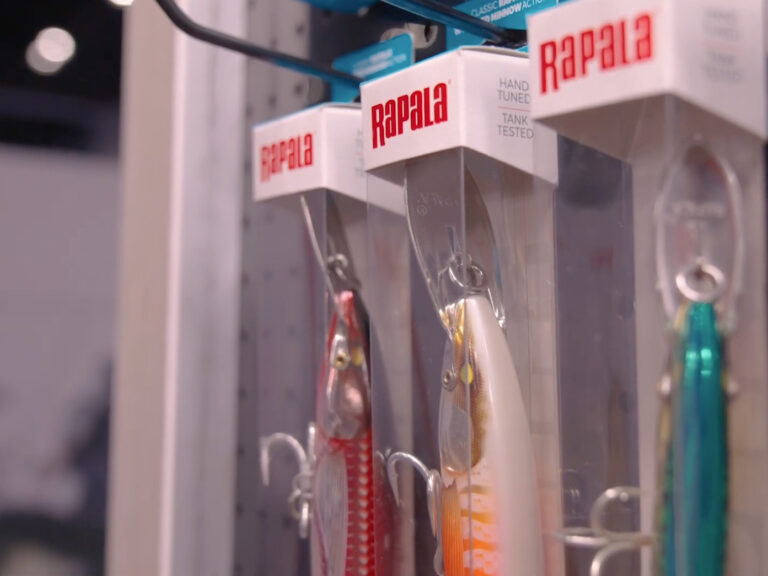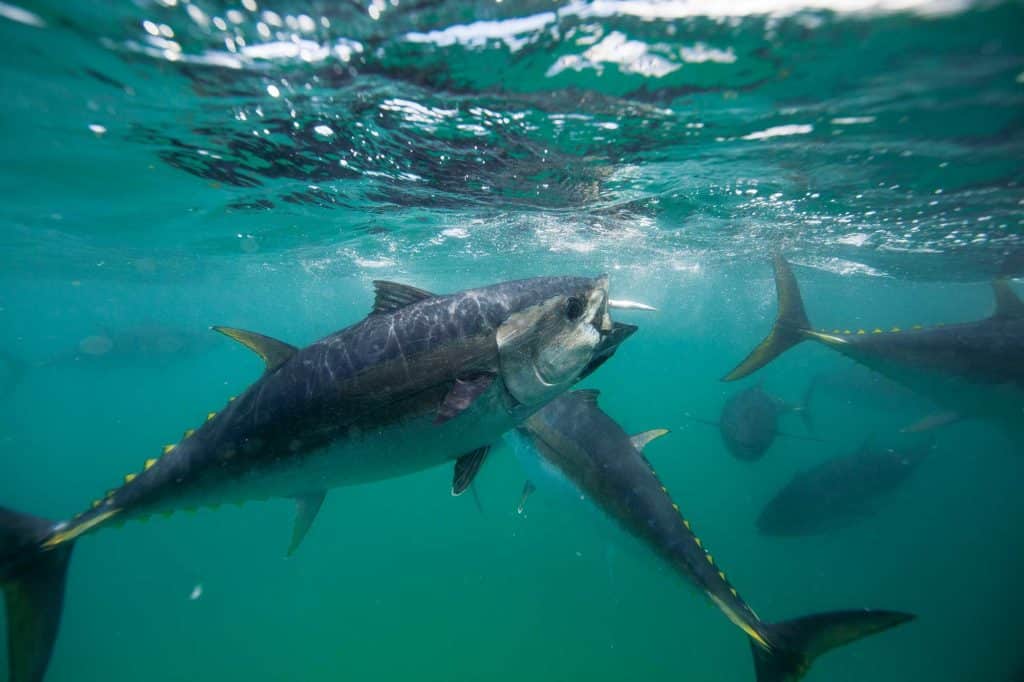
A half-acre of ocean erupted in a foaming cauldron as a school of 120-pound bluefin tuna forced a ball of baitfish to the surface and then pulverized it from every angle. I motored closer to the roaring frenzy, but the tuna sank away. I pulled the outboard engine out of gear, and seconds later, the tuna school resumed its raucous attack. I shifted into gear again, and again the tuna vacated the surface. I pulled back to neutral, and the tuna returned.
Few instances are more fascinating or clear-cut than this one when it comes to effects of boat noise on offshore game-fish behavior. Most experienced anglers and scientists agree that fish can hear. Yet which sounds can fish hear? Which repulse them, which attract them, and which do they ignore?
Answers to these questions could help anglers to not only avoid noises that might spook fish, but perhaps also attract them.

Auditory Senses
Fish sense sound underwater via two sensory organs, including bony structures called otoliths in the inner ears. The other organ is called the lateral line, which runs along each side of a fish’s body from the gills to the caudal peduncle (just forward of the tail).
Generally speaking, fish use their inner ears to sense sounds at a distance, says Cecilia Krahforst, a doctoral candidate at East Carolina University who focuses on how noise affects fish behavior. The lateral line comes into play when something is less than a body length away, she says.
“All fish species [that have been tested] can hear,” Krahforst says. “They utilize hearing for a number of purposes.” They use it to find food, locate schoolmates, engage in courtship, and avoid danger. Yet the degree to which a fish relies on hearing varies with each species and with the ambient noise level within any particular body of water, she adds. Pelagic fish such as bluefin tuna, for example, don’t depend on auditory sensitivity as much as do fish species that inhabit shallower water, such as redfish or white seabass, says Larry Allen, chair of biology at California State University at Northridge.
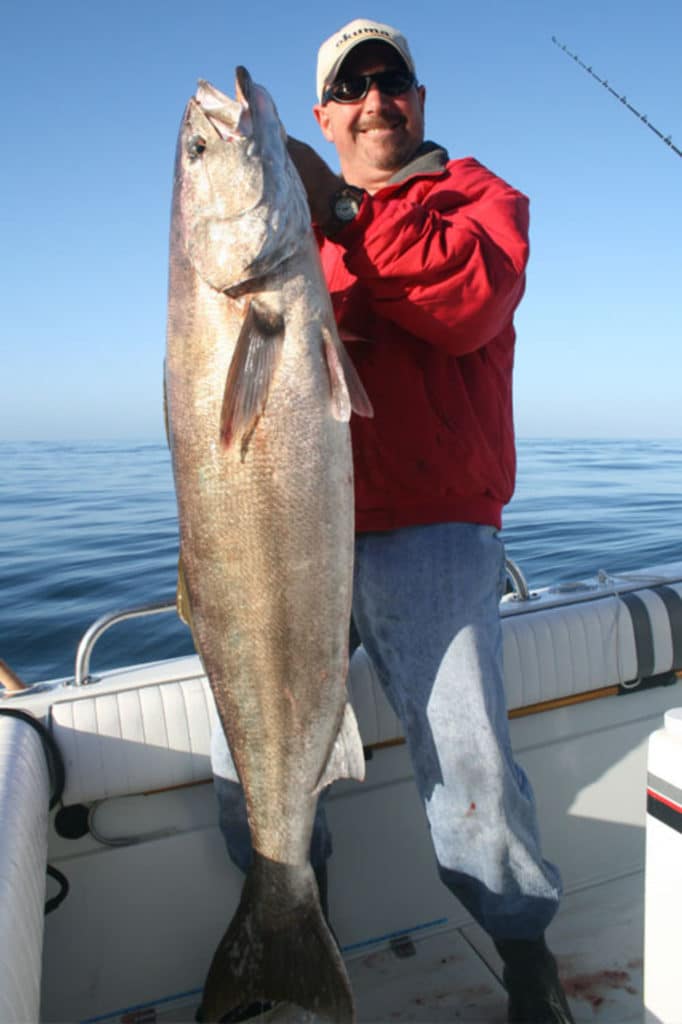
Allen’s studies have focused in part on soniferous (sound-producing) marine fish along the Pacific coast, including white seabass, which he contrasts with bluefin tuna. “White seabass are croakers that have relatively large otoliths,” he says. The otoliths are roughly the size and shape of an almond in full-grown white seabass.
White seabass use these to hear the low-frequency “blaaah” noise emitted by other white seabass to locate one another and form schools, particularly during their spawning period, Allen says.
The same auditory senses allow this species to distinctly hear a wide range of sounds, including man-made noises such as the slamming of a deck hatch or the rattle of an anchor chain — sounds that tend to repulse white seabass, Allen has observed.
“The otoliths in bluefin tuna, on the other hand, are very small — about the size of a grain of rice,” Allen says. This indicates that bluefin don’t rely on hearing as much as white seabass do. Like many pelagic species, bluefin depend more on other senses, such as vision.
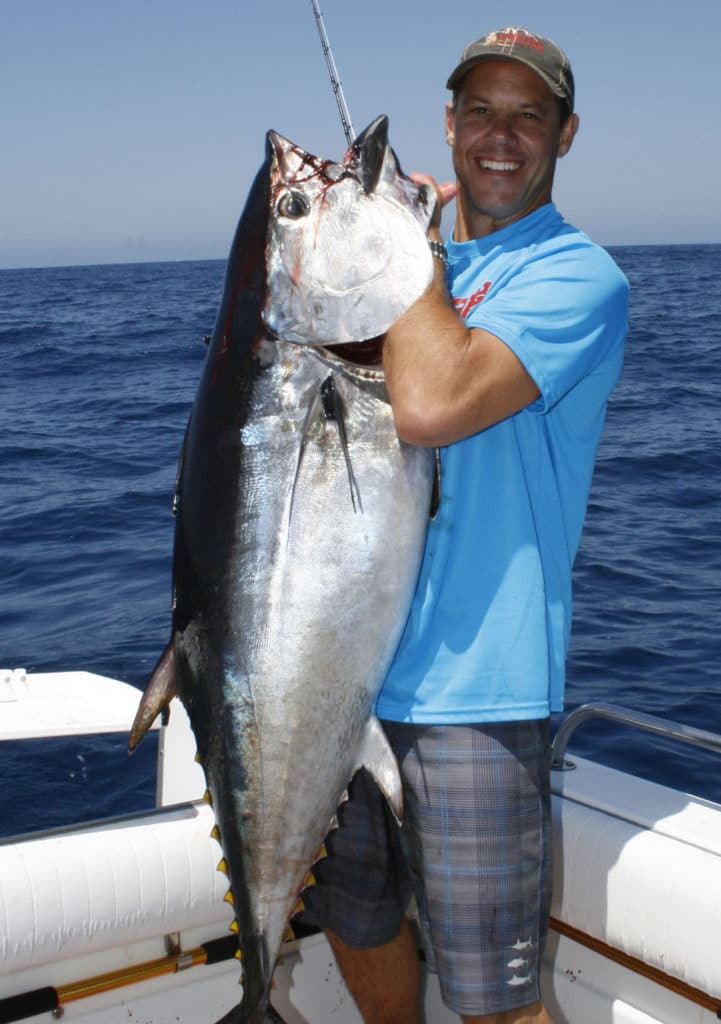
Learned Behavior
That’s not to say that bluefin don’t hear. In fact, Arthur N. Popper, professor emeritus with the University of Maryland’s department of biology, points to studies indicating that bluefin can respond to sound.
In these studies, captive bluefin were trained to react to a sound produced through an underwater loudspeaker that corresponded to food being placed into their pen. The tuna would rush to the location of the sound each time they heard it, even when they were not being fed.
With this in mind, let’s get back to our opening real-life example: an outboard motor shifting into gear and repulsing bluefin tuna. “More than likely, [the fish responded to] the clunk [of the gear meshing] as you shifted into gear,” Popper speculates. “Every time you put the motor in gear, there was a low-frequency sound.”
Bluefin can hear sounds in the 100- to 800-hertz frequency range, says Popper. Introducing a sudden low-frequency noise, such as the clunk of shifting into gear in close proximity, might have proved startling to the fish.
Fish can also grow to tolerate constant, repetitive noise, man-made or otherwise, Popper asserts. “Put the motor into gear enough times, and [tuna] might become habituated to the sound,” he says.
But Popper quickly clarifies that sound is not the only stimulus affecting fish behavior. “Bluefin tuna also might rely on vision and smell,” he says. Either of these senses can influence their behavior as much as hearing, and both are affected by boats.
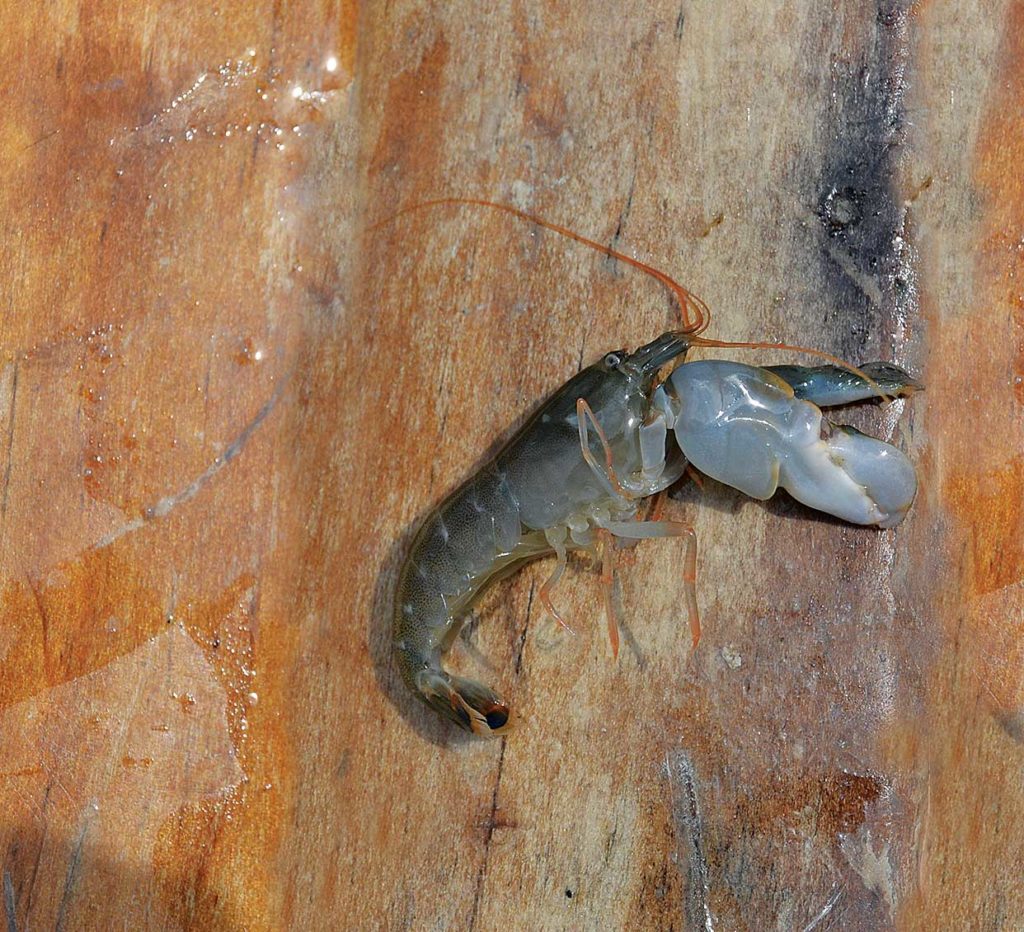
Hear This
In turbid, nearshore waters where visibility is poor, being able to hear well becomes an even bigger advantage than it is offshore, not only in avoiding danger, but also in finding food.
For example, to find food when visibility is poor, fish such as drums and grunts might listen for sounds that are appealing, such as the sound produced by a crustacean known as the snapping shrimp, says Krahforst.
The 2-inch-long shrimp, which makes an underwater click by snapping shut its large, outsize claw at high speed to catch prey, often inhabits beds of sea grass. Species such as redfish are able to home in on the sounds to find these beds and forage for fish, crabs and shrimp.
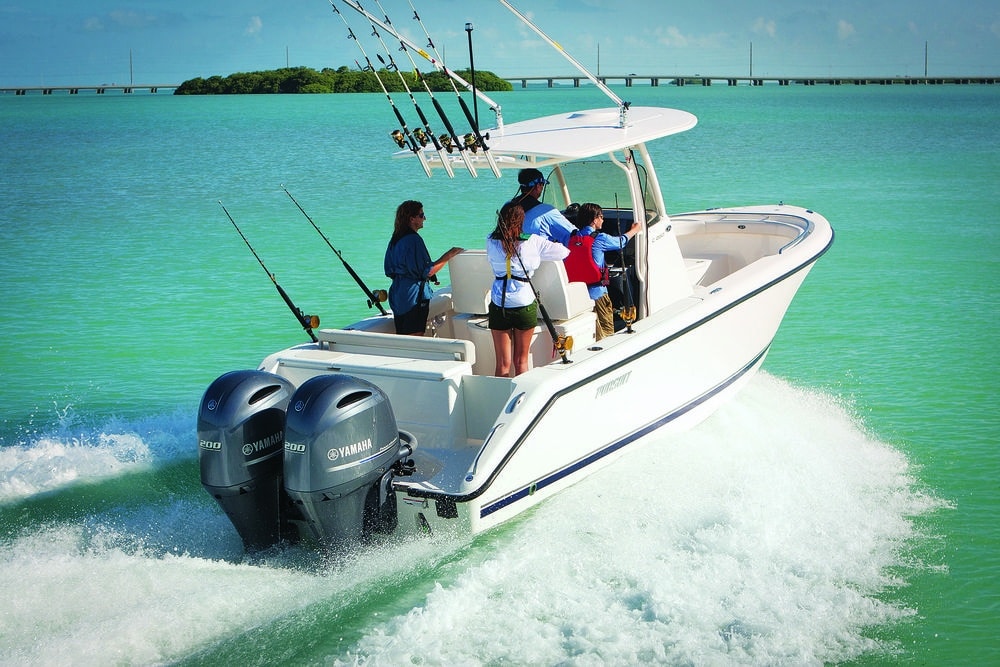
Noisy World
While sound travels four to five times faster in water than in air, hearing a sound underwater is not as easy for a fish as that fact might lead you to believe.
“It is a noisy world,” says Krahforst. For a fish to hear anything, the sound level must rise above the din of the background noise of the underwater realm. Background noise tends to increase at night as nocturnal marine species become more active.
Lots of things, both natural and man-made, create noise underwater, including waves, marine life, ships, oil rigs and, yes, sport-fishing boats. All these things can make it tough for a fish to distinguish individual sounds, particularly at a distance. Yet Krahforst’s research indicates that one of the most popular forms of propulsion for recreational fishing boats might be one of the least obtrusive man-made sounds in the water.
Oyster toadfish — common bottom dwellers seen rarely by anglers — emit a low-frequency “boop” or boat-whistle call to other toadfish by using their swim bladders during courtship periods. Krahforst found that the sound of a running outboard motor had little effect on the toadfish’s calling rate compared with no boat noise at all. The rumble of inboard engines, on the other hand, did reduce the frequency of the calls.
One reason that outboards tend to be less disruptive might revolve around a fish’s hearing range. As indicated earlier, fish hearing is focused on low-frequency sounds below 1,000 hertz. Running outboard motors emit much of their high-energy sounds at upper frequencies in the 1,000- to 5,000-hertz range, says Krahforst, so it is possible that fish might not hear outboard-engine noise well. Inboards, on the other hand, emit sounds at frequencies below 1,000 hertz — within the range of fish’s auditory senses.
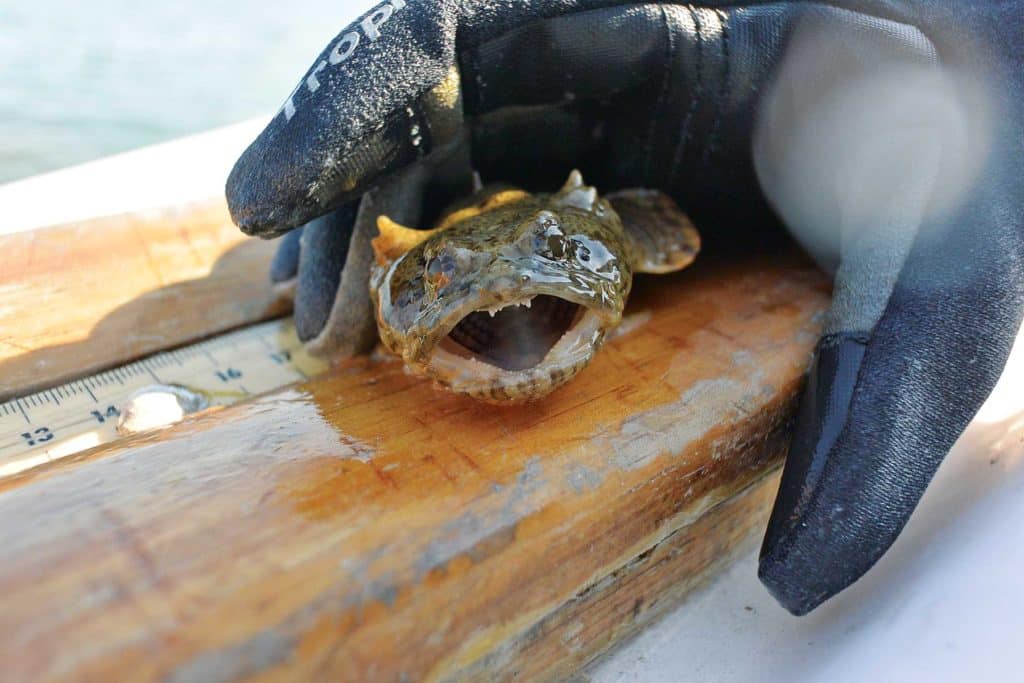
Raising Fish
While inboard engines might put a damper on the sex life of oyster toadfish, a long-held fishing theory maintains that the harmonic drone of twin diesel inboards at trolling speed “raises” fish such as dolphin (mahi), tuna and marlin.
Yet Popper, who has studied the effects of sound on fish for the past 30 years, is skeptical. “No sound we know of will consistently attract fish,” he says.
Popper does not dispute the ability of offshore fishing boats to raise fish, but speculates that the attraction might not lie in the sound, “but rather in the shadows created by the boats.” He points out that offshore fish are attracted to the shadows of other objects, such as fish-aggregating devices, weather buoys, oil rigs and floating debris. The shadow cast by a boat might have the same effect.
Another theory held by some anglers is that increased boat traffic has a negative effect on fish. On the validity of this theory, Popper and other scientists agree.
“Boats create an incredible amount of noise,” says Popper. There’s engine vibration, exhaust noise, and pressure waves generated by spinning propellers and wakes, all contributing to the many and varied background noise occurring underwater. “When background noise goes up, fish aren’t likely to be happy,” Popper adds. He uses the analogy of living next to a busy freeway. “The fish can’t hear sounds of biological importance to them since the man-made sounds impair hearing, and that has the potential to affect their hormones and mood,” he says.
Krahforst’s research on oyster toadfish indicates that boat traffic can have long-term effects on fish behavior. When juvenile fish were reared from embryos in a controlled environment exposed to inboard engine sounds, the fish failed to display normal attack behavior.
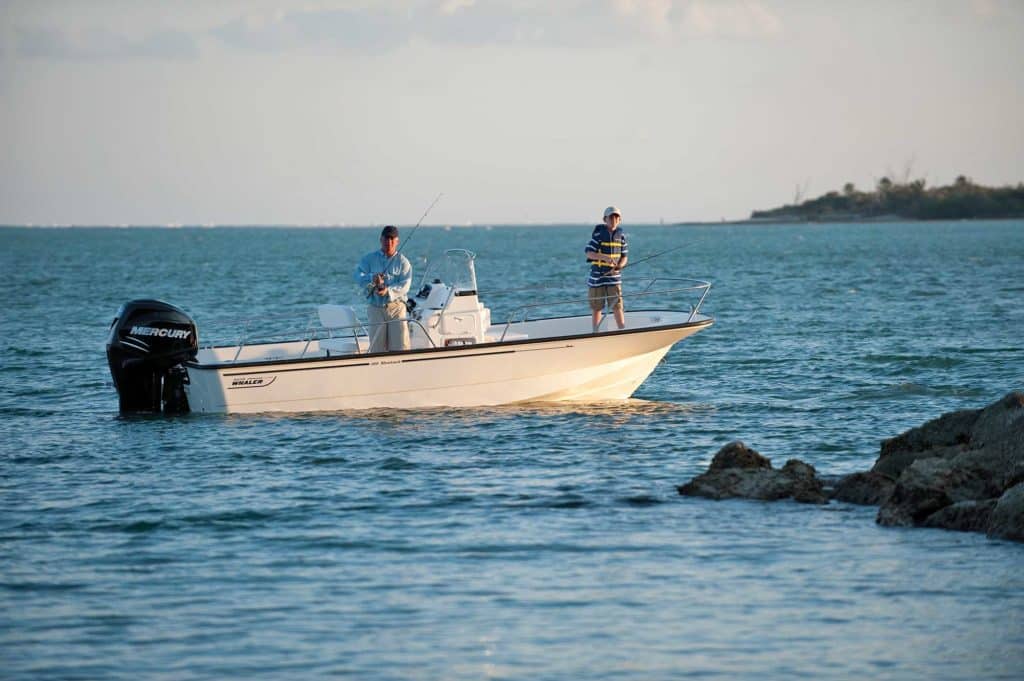
Practice Stealth
The concept of avoiding loud noise while fishing has merit, says Allen. “What happens when you thump on the side of an aquarium?” he asks. “The fish don’t like it.” The same principle can be applied to fishing.
Sudden pulses of noise, like slamming hatches, dropping a sinker on the deck, and stomping your feet, can and do spook fish, especially in shallow water. “Newly introduced sounds bother fish,” says Krahforst. “So the more silent you can become, the more you will be successful [while fishing].” If there is noise, make sure it is at a constant level. “Steady noise initially bothers fish, but once they become habituated to the noise, it doesn’t seem to bother them,” Krahforst adds. “Constant noise becomes part of the environment.”
While savvy anglers have long accepted that actions such as hatch-slamming create noise that travels through the boat hull and into the water, many also believe that people talking on the boat does not create any underwater noise.
Allen says that’s not true: The sound of conversations travels underwater, he asserts. “You can hear [while underwater] people talking above the water,” Allen says. If divers can hear this, it’s a safe assumption that fish can too.
The lesson here: Minimize conversations, particularly when fishing flats or shallows and/or pursuing fish that possess strong auditory senses, such as redfish or white seabass. Keep voice communication to hushed tones.
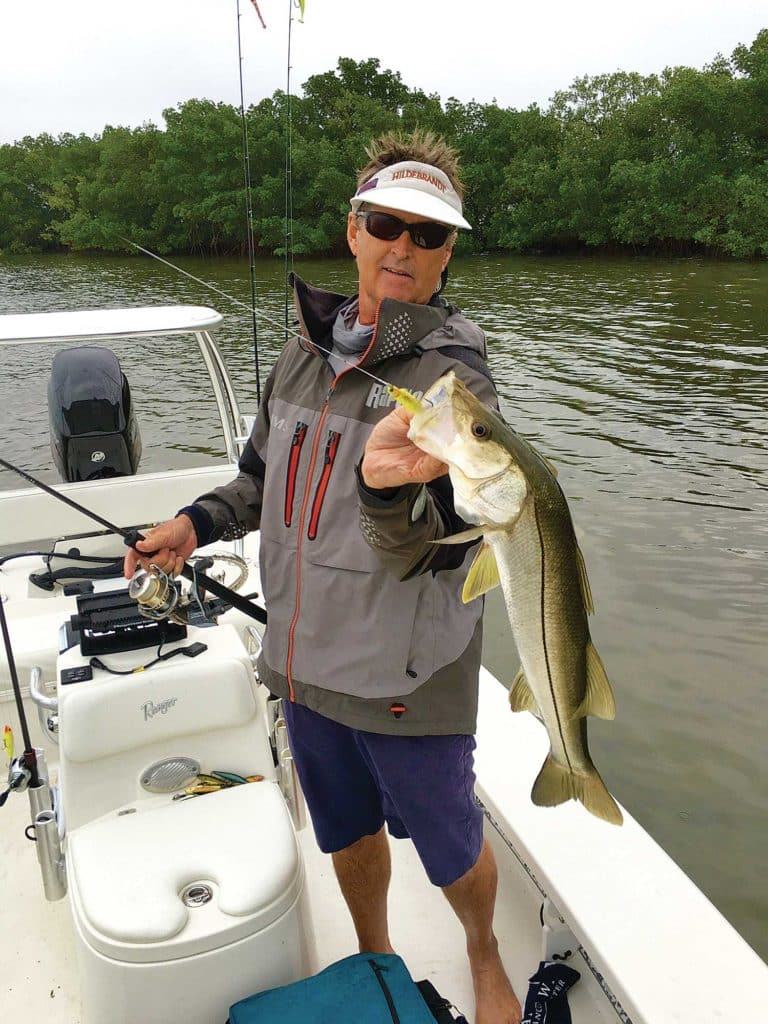
Motor Myth
Some anglers also believe that electric trolling motors are silent underwater. Yet Krahforst maintains that this is a myth. “An electric trolling motor does make underwater noise,” she says. The noise results largely from the pressure wave generated by the spinning propeller. Yet the sound is of far less amplitude and at a higher frequency range than other (i.e., internal-combustion) motors, she adds.
While many saltwater anglers use electric trolling motors with success, others avoid this propulsion system when fishing very shallow water such as flats.
“I won’t use a trolling motor when fishing in 2 feet of water or less,” says pro Bernie Schultz. While he participates these days in the Bassmaster Elite Series, Schultz also fishes the coastal waters of Florida where he grew up.
Schultz uses a trolling motor in deeper water, but like most flats anglers, he employs a push pole when pursuing bonefish, permit and, sometimes, tarpon in shallow water. He also uses a push pole when fishing for largemouth bass in skinny water. “Bass can be sensitive to electric trolling motors when they are cruising or bedding in the shallows,” Schultz explains.
Many anglers also believe that hull slap — the tendency of some boat bottoms to trap pockets of air as they rock from side to side and splash water — can spook fish in the shallows. Krahforst confirms this is a valid precept. Any sudden sound that is human-generated has the potential to repulse fish. “That includes vessel noise,” she says.
Schultz doesn’t need scientists to tell him that vessel noise is bad for flats-fishing. That’s something he has learned through years of on-water experience, and it’s the reason he uses a technical poling skiff with soft lines that eliminate pockets and hull slap. It’s just one more step that anglers can take to minimize the noise factor.
Don’t Miss This!
You can use the sound your boat makes underwater to raise billfish. Click on the image below to see how.

Creating sound will make it tougher to catch many fish. Also making it tougher? The fish itself. For more reading, see which eight species are the toughest game fish you could hook in inshore and shallow-reef waters.
You also could check out Sport Fishing’s list of the top 100 game fish in the world.


